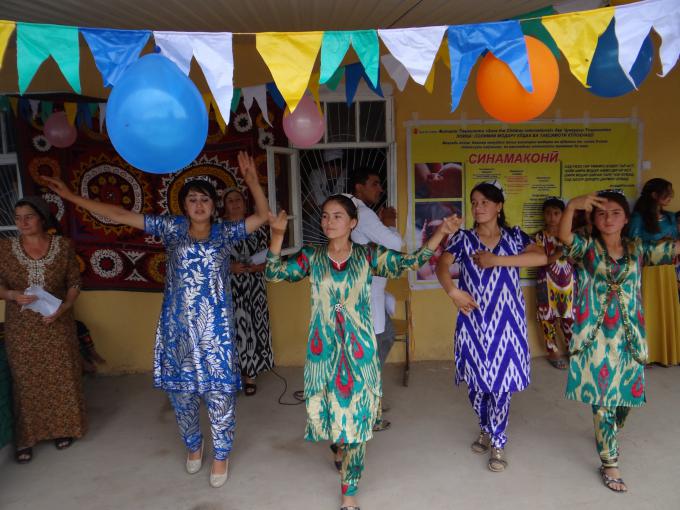New health facility in Olimobod village
The Olimobod village located in Rabot Jamoat (Sub district) of Tursunzoda district. It is 20 km far from the district center with a population of 1,184 persons. The community mostly engaged in agriculture and animal breeding did not have health facility until 2017. To get healthcare services, the local community used to go 4 km far crossing a mountain through paths to the neighboring village - Husnobod. During the winter snowfalls, the paths were blocked from time to time and caused additional burdens for the village residents.
In February 2016, when the Maternal and Child Health (MCH) project staff came to Olimobod to target the village under the project, head of the village along with the community showed a slight reluctance i.e. were not ready for collaboration. Soon afterwards, they contacted the project staffs and expressed desire for cooperation with the Save the Children project. Thus, the village had been targeted for collaboration in 2017.
“After you left our village”, - mentioned the Head of the village - “We had a general village meeting with the local community members and asked such questions: 1) Why did we refuse to collaborate from the beginning? This project people want to help, but we did not accept. Does it harm us to have a health facility in our village? We are capable to maintain our own health facility, aren’t we? Then tried to contact you”.
This year the MCH project staff conducted training for the community leaders on project proposal writing and opened their eyes to fix their internal problems on their own. Afterwards the community leaders developed a small project proposal for building a new health facility and collected certain amount per household to realize their project in conjunction with the Save the Children project. It was a big challenge for the community leaders, however being motivated, they could overcome it; mobilized the local residents and built their own health facility. They also negotiated among the community members, organized joint actions, plastered, polished and painted the HF.
Besides, the rural women of the village received the following sessions: 1) Training on basic MCH issues like prevention of childhood illnesses, recognition and prevention of danger signs before, during and after pregnancy, proper caring of baby and pregnant women, exclusive breastfeeding and complementary feeding for the children, importance and maintenance of the Emergency Transportation Funds. 2) Education session for pregnant women on family planning. 3) House to house education sessions for distribution of IEC materials. As the result, the women became keener on preventing childhood diseases and caring their infants at home. That is what the local health worker – Mr. Musoev Saiddovud stated about collaboration with the MCH project, “I am glad of SC project that I have standard workplace now and easily receive any patients. More important, the series of training sessions, we all received, contributed to change behavior of the community members and even slightly decreased disease cases in the community”.
Particularly the contribution of the active women group (WG) led by Alimova Sadbaroy was visible and worth to mention. Seeing the difficult situation the WG members convinced the women-led households to mobilize their sons in building the HF as it is public and all villagers benefit from it. They also have their Emergency Transportation Fund saving, which they frequently use for solving their community internal issues. They also organized first-aid-kit with first priority medicines to be used by the villagers in time to keep the community healthy and endurable in tough times.
Rohila Apa is one of the active WG members. She was quite glad to join the WG and set forth her one-year-ago condition as follows: “My mother lives together with me. She is an old women suffering from the hypertension. We were always in worry due to absence of health facility and nurses in the village. One day she had high blood pressure and we happened not to have necessary remedies at home. How we ran out of them, I did not know. Thus, I had to go to the next village or to the city. Unfortunately, it is difficult to find vehicle in the village. Terrible thoughts turned round my head until I reached home: can I indeed help my mother in time? In what condition is my mother now? Why do not we have a health facility in the village yet? Why do not we think of creating relevant conditions for us?”
“Fortunately, hence, I will not go anywhere for buying remedies and use our own first-aid kit. I will not look for taxi drivers but am able render assistance to my mother on time. It saves my time for farming at home. Seeing the importance we – the active WG members promised to arrange a larger box for the first aid kit and extend its medicine assortment at our ETF savings”.
 Central Asia
Central Asia 
